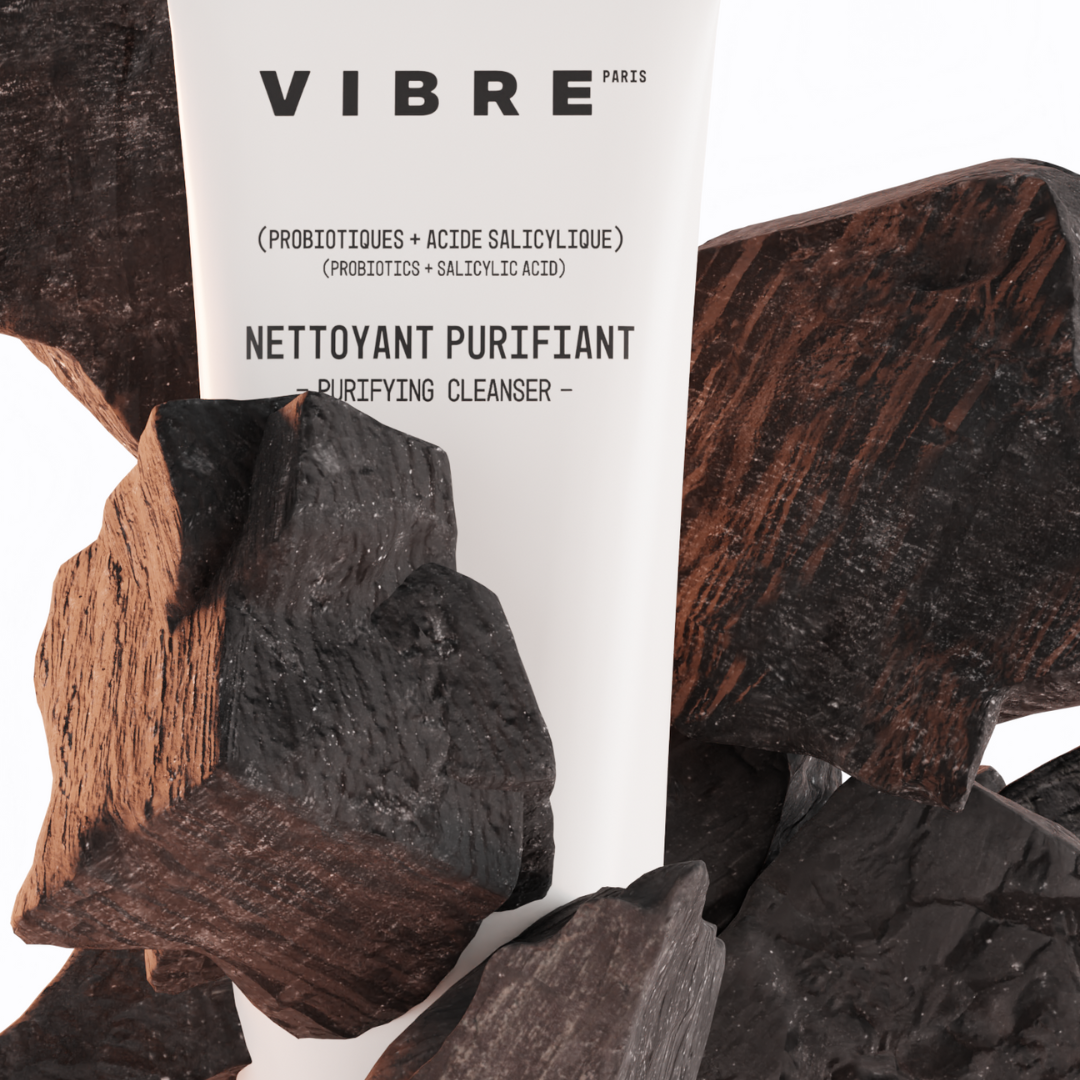
What causes an open comedo and a closed comedo?
Share
Comedones, commonly known as blackheads and whiteheads, are types of skin imperfection that result from clogged pores. Understanding what causes a closed comedo (whitehead) and an open comedo (blackhead) is essential to adopting effective prevention and treatment strategies.
What are blackheads?
Blackheads form when the skin's pores become clogged with a combination of sebum, dead skin cells and sometimes bacteria. Blackheads can be classified into two main categories: closed and open.

What is a closed comedo, also known as a whitehead?
A closed comedo, also known as a whitehead, forms when an obstructed pore remains closed to the skin's surface. This creates a small white or flesh-colored bump.
Here are the main causes of a closed comedo:
- Excess sebum: The sebaceous glands produce an excessive amount of sebum, an oily substance designed to lubricate and protect the skin. This excess sebum can clog pores.
- Accumulation of dead skin cells: Dead skin cells are not effectively eliminated, and can mix with sebum and clog pores.
- Bacterial proliferation: Bacteria can multiply inside clogged pores, causing inflammation.
- Comedogenic cosmetics: Some skincare and make-up products can clog pores, promoting the formation of closed comedones.
What is an open comedo, also known as a blackhead?
An open comedo, or blackhead, forms when an obstructed pore remains open on the skin's surface. Air oxidizes the sebaceous material, giving it a black color. The causes of an open comedo are similar to those of a closed comedo:
- Excess sebum: As with closed comedones, excessive sebum production by the sebaceous glands can clog pores.
- Accumulation of dead skin cells: Dead skin cells mix with sebum and clog pores.
- Oxidation: When a blocked pore remains open, the sebaceous material inside the pore oxidizes on contact with air, turning black.
- Pollution and impurities: Environmental impurities can accumulate in open pores, contributing to the formation of blackheads.
How to prevent blackheads

The essential step in preventing the appearance of blackheads is to cleanse morning and night with a suitable skin care product containing ingredients such assalicylic acid and probiotics. The key to preventing blackheads is to maintain good skin hygiene. Effective skin cleansing removes excess sebum, as well as dead cells and impurities that can clog pores. However, it's crucial to adopt a gentle, skin-friendly routine to avoid negative effects. In fact, overly aggressive products can irritate the epidermis, leading to overproduction of sebum and increasing the risk of blackheads.
Here are a few recommendations for an optimal care routine:
- Cleanse your skin morning and night with a mild product.
- In the evening, remove make-up before cleansing.
- Always moisturize your skin after cleansing, whatever your skin type. Contrary to popular belief, oily skin also needs moisturizing (see "Which moisturizer for oily skin?").
To limit the overproduction of sebum, follow these tips:
- Limit UV exposure as much as possible. Whether in the sun or in a tanning salon, UV rays cause the skin to thicken, impeding the flow of sebum.
- Use a high-protection sunscreen when outdoors.
- Choose non-comedogenic products adapted to your skin type, whether skincare, sun creams or cosmetics.
- Avoid overloading your skin with too much make-up.
- Adopt a balanced diet, rich in vegetables. Reduce consumption of fatty, sugary, ultra-processed foods and stimulants such as coffee.
- If you notice overproduction of sebum after taking certain medications, consult your doctor to discuss possible side effects.
- In the case of acne, whether microcystic or not, medication may be required to reduce blackheads. Consult a dermatologist for appropriate treatment.
By following these tips, you can effectively reduce the appearance of blackheads and maintain healthy, balanced skin.
How do I get rid of blackheads?

To get rid of blackheads effectively, it's crucial to adopt a comprehensive, targeted approach. Blackheads, whether open or closed, are often the result of the accumulation of dead skin cells, excess sebum and sometimes even bacteria in the pores. To counter these factors, we recommend the use of skincare products specifically formulated to act on their origin.
Salicylic acid is one of the most effective ingredients for treating blackheads. By deeply exfoliating pores, it removes dead skin cells and regulates sebum production, helping to prevent clogged pores. Retinoids are also precious allies in the fight against blackheads. By promoting cell renewal, they help keep pores clear and prevent clogging.
In some cases, the use of a blackhead remover can be considered to manually extract blackheads. However, this must be done with care to avoid scarring and infection. Proper disinfection and gentle techniques are recommended to avoid irritation.
Finally, in the event of persistent or severe blackheads, we strongly advise you to consult a dermatologist. These healthcare professionals have the knowledge and resources to assess your skin and recommend suitable treatments. They may prescribe stronger topical medications, such as stronger retinoids or products containing higher concentrations of salicylic acid. In some cases, in-office procedures such as chemical peels or professional extractions may also be recommended to effectively eliminate comedones.
In short, by combining good skin hygiene with the use of specific skin care products, and possibly the help of a health professional, it is entirely possible to get rid of blackheads and achieve healthier, more radiant skin.
Conclusion
Closed comedones (whiteheads) and open comedones (blackheads) are the result of clogged pores caused by excess sebum, dead cells and sometimes bacteria. By adopting the right skincare routine and using the right products, these skin imperfections can be effectively prevented and treated. The key is to keep skin clean and well hydrated, while avoiding products that can clog pores.
